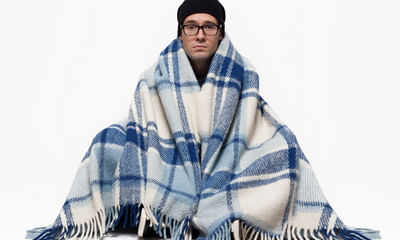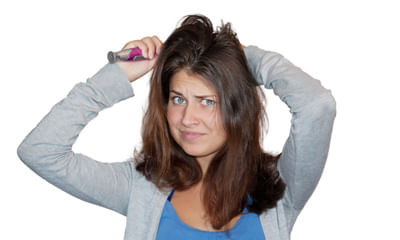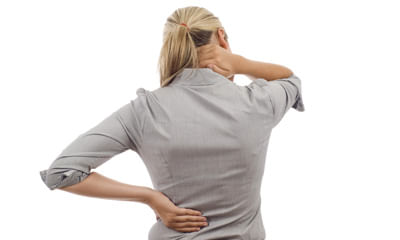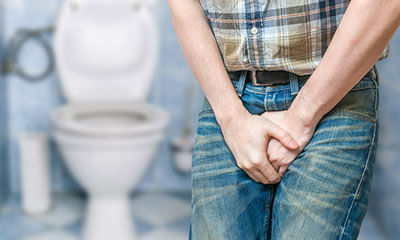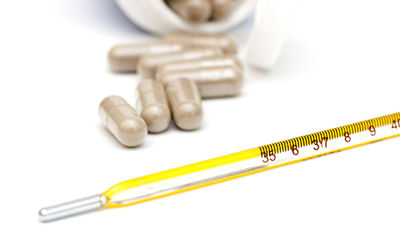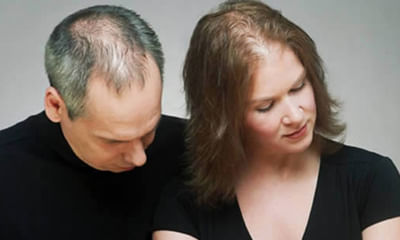Diet For Typhoid Patients
What should be diet of a typhoid patient. What should the patient eat when typhoid is normal. What should he/she avoid t ...
Ask Free Question
Don't eat rise, and oily food, fast food avoid drink coconut water at morning time. Eat kivi food drink boile water also. Take vitamin b complex tab.
After typhoid I have pain in legs only near about one month. I do all test thyroid, hemoglobin, cbc, ana blot test etc. ...
Ask Free Question
Respected lybrate user...! Mostly on Typhoid suffering individuals are suffering from body pains....! But after more days gone.... immune levels are increasing....all pains are gone.....! So please be patiency and take immune system boosters diet/ dietary supplements.....! No need to be serious about this....!
Hii, I am 18 year old male I had symptoms of headache in neck side and fever and little fever all the time. So I conduct ...
Ask Free Question
Typhoid patient take long to recover you should take antibiotics for long in typhoid also post recovery weakness is common tab paracetamol 650 mg twice daily tab pantop 40 once daily empty stomach tab ciprofloxacin 500 mg twice daily for 7 days.
Which food is not health for typhoid patient which food can taken to thyroid patient. ...
Ask Free Question
Progressive diet plan: a progressive diet from a liquid diet to a normal diet depending on the level of tolerance would help the personâs appetite. â¢fluids in the form of tender coconut water, barley water, electrolyte fortified water, fresh fruit juice, vegetable soup, buttermilk and water should be consumed until body temperature comes back to normal. â¢to begin with, consume liquid diet for a few days and then gradually take fruits like bananas, can notaloupes, watermelons, grapes, peaches, and apricots. It is better if solid food is avoided unless the person feels very hungry. â¢as the personâs appetite gets better, semi-solid foods can be given. Boiled rice, baked potato, soft-boiled or poached eggs, baked apple, yoghurt, vegetable soup can be given. â¢when you are free from the fever, fruits, boiled vegetables and unrefined foods like unpolished rice and white bread can be included. â¢a typhoid recovery diet plan should include yogurt and eggs, as they are easier to digest than meat and provide adequate protein. For vegetarians, lentils, legumes and cottage cheese, meet the protein needs. Diet tips: 1.Drink boiled water and keep your body hydrated. 2.Consume 3 â 4 liters of fluids in the form of water, fruit juices, tender coconut water and soup. 3.Eat small frequent meals rather than large meals to ease digestion and for maximum nutrient utilization by the body. 4.Try not to include spices as much as possible till the fever recovers. Slowly introduce protein in your diet in the form of eggs, yoghurt and boiled fish; depending on your tolerance level, increase the portion size. Foods to avoid during typhoid: dietary precautions during treatment of typhoid fever make sure that the disease does not aggravate. It helps you ease from the discomforts of the disease. â¢avoid high fiber foods: intake of whole grain cereals and their products like oatmeal, whole wheat bread, and raw vegetables in the form of salads, are rich in fiber. It can add on the stress on your digestive system. â¢avoid vegetables like cabbage, capsicum and turnip as these can cause bloating and gas. â¢stay away from oily foods, spices and seasonings like pepper, cayenne and chilli powder to make sure that the digestive tract does not inflame all the more.
Hello sir after typhoid my hair is falling from the roots daily and my hair is thin so please give me a suggestion what ...
Ask Free Question
Do you have dandruff problem also. Regularly wash your hair with mild shampoo. 1. Vitamin for hair loss.(a, b and c) 2. Enrich diet with protein. 3. Do warm coconut oil massage. Take coconut oil and heat it up so that it is warm, but not too hot. Massage your scalp with this hot oil for a few minutes. 4. Avoid brushing wet hair. 5. Keep yourself hydrated. 6. Put on a shower cap for an hour then shampoo your hair. It helps to stop hair loss and promote hair growth. 7. Avoid hairstyles that pull on the hairline. 8. Ditch hair tools that use high heat. 9. Be wary of chemical processing. 10. Drink water to hydrate your body. U can mix arnica q and jaborandi q equal quantity. Apply on scalp with the help of cotton. Wash hair next day. Do it twice a week homeopathy is a very effective for this problem n has very encouraging results. You can contact me for a detailed consultation.
I was having typhoid from last 10 days. Now i'm not having fever but only neck, shoulders and upper back pain. My esr ra ...
Ask Free Question
Typhoid patients take time before full recovery. Don't panic with reports of tests, these will also come down soon. Don't self medicate. Review with your treating physician.
My wife recently got typhoid and jaundice at same time reporting igm and igg both positive and sgot - 57.1, sgpt- 69.2 r ...
Ask Free Question
The patient should rest in bed till the acute symptoms subside. He should not be given any solid foods for the first few days of the treatment.He may be given plenty of fresh fruits and vegetable juices. The idea is to provide a high carbohydrate based diet as the liver is infected, and minimize the strain on the liver. Suji or dhalia porridge, soft custards, curd rice are other soft easy digestable foods.Fruits and vegetables are highly recommended, and can be used to prepare juices. Those like lemon, grapes, pear, tomato, carrot, beet and yes, sugarcane are preferable. Sugarcane juice, mixed with lime juice, being high carbohydrate can hasten recovery from jaundice. Half a glass of this juice, mixed with half a lime, may be given to the patient twice daily.It is, however, very essential that the juice must be pure and preferably prepared at home in a hygienic manner. Resistance is low in jaundice and any infected beverage could only make matters worse. It is also important to prepare this juice fresh each time and avoid storing it. After the severity of the decease has passed, the patient may be given a simple and well-balanced diet. The emphasis should be on fresh juicy fruits such as orange, apple, pineapple, grapes, papaya and mango, and vegetables such as spinach, fenugreek and carrots. The patient should avoid all fats like ghee, butter, cream and oils for at last two weeks and thereafter their consumption should be kept down to the minimum. Digestive disturbances must be avoided. No food with a tendency to ferment or putrefy in the lower intestines like pulses and legumes should be included in the diet. Other effective home remedy is the use of green leaves or radish (muli). The leaves should be pounded and their juice extracted. It should be strained through a clean piece of muslin before use.
6 months before I have typhoid and urine color is dark yellow with inflammation. After some months it was normal. Now pa ...
Ask Free Question
It can be because of urine infection and piles. 1. Take home cooked, fresh light food. Take a lot of green vegetables n fruit. 2. Increasing the fibre in your diet is known to be as effective as injections for preventing further problems 3. Increasing your fluid intake which can help prevent further problems with haemorrhoids 4. Avoiding straining and constipation which is the most useful thing patients can do to prevent the problem coming back. If the fibre content of your diet is not sufficient to keep your stools soft, then a fibre supplement can help. 5. Maintain active life style 6. Curd is good for u. 7. Avoid fast foods, spicy n fried foods Homeopathy has very encouraging results. Consult online with details
My brother suffering from fever and dry cough headache and hip pain. In first 10 days he take medicine it's not cure. An ...
Ask Free Question
This is clear cut case of tubercular pleural effusion as chief presentation put on tapering steroids and take akt 4 for 2 months and akt 3 for 3 months more high protein diet veg fruits sputum for afb x 3 pcr for tb montoux test .
Best way to treat hair fall. Is hair transplant is safe or not. P please guide me what is the right treatment of alopeci ...
Ask Free Question
Ayurvedic experts believe that approximately 50% of indian women are losing hair faster than ever. Let’s be honest, the current beauty industry has destroyed hair care. With generic formulations, diluted & poor quality herbs, ayurvedic hair oils that otherwise seem promising have failed to reach expectations. Even though natural sciences are considered beneficial, it has hardly shown any results. The truth is, hair fall is a complex problem. In fact, ayurveda believes, its the effect of an internal imbalance. Identifying and addressing this internal imbalance will: reduce hair fall & damage reduce hair maintenance effort heal dry, brittle & lifeless hair in order to understand the root cause of your current hair fall, it is important to find out which internal imbalance is causing it losing 20-100 hair daily is normal. Any more than that and you should start treatment. There can be several factors behind hair loss such as environmental effects, aging, too much stress, excessive smoking, nutritional deficiencies, hormonal imbalance, genetic factors, scalp infections, use of wrong or chemically enriched hair products, certain medicines and medical conditions like thyroid disorder, autoimmune diseases and chronic illnesses to name a few. Do not use shampoo and apply coconut oil and only dry excess oil if any without soap or shampoo in order to have a healthy volume of hair on your head, the rate of hair loss and replacement should be in tandem. With age, your hair growth cycle shows signs of slowing down and factors like age, disease, and hormonal changes among others affect the pace at which an individual hair follicle moves through the 3 phases of the hair cycle. A disruption in your hair cycle can give rise to loss of hair that’s rapid and unexpected. Hair loss or alopecia can affect both men and women. The causes of your hair to fall at an alarming rate are the reasons behind hair loss could be many, but here are 6 major ones: 1. Lack of protein in your diet when you exclude protein from your diet, your body starts to conserve the protein that it has by altering the growth cycle of your hair. In such cases, your hair enters into the resting stage, resulting in zero hair growth. In india, 9 out of 10 people are said to suffer from low amounts of protein in their diet, with 91% vegetarians reporting protein deficiency. 2. Iron deficiency iron plays a very important role in the transportation of oxygen to the different organs of the body. Lack of iron in your diet (which is the principle reason behind anaemia) can give rise to several health problems including hair loss. Your body attempts to direct oxygen to important organs so as to support their functioning. As a result, your scalp witnesses a low supply of oxygen, which causes hair loss. 3. Vitamin d-3 deficiency deficiency of vitamin d-3 gives rise to a type of hair loss called telogen effluvium (te). This is a temporary hair thinning phenomenon that takes place when the all the hair on your scalp enter the resting phase at the same time, subsequently causing you to shed a large amount of hair later on. 4. Smoking smoking can also affect the health of your hair, especially the rate at which it falls and the number of strands lost in a day. A research carried out by the harvard school of public health has revealed that smoking can cause a rise in a hormone called dihydrotestosterone (dht). An increase in dht level prevents new hair cells from growing and causes hair follicles to reduce in size with each hair cycle. As a result, the area on your scalp that gets affected by dht experiences a lack of hair growth. 5. Use of testosterone supplements in gym intake of testosterone in the form of supplements and injections to build muscle mass can trigger hair loss in men. This takes place when the testosterone in these supplements gets changed into dht, thereby affecting your hair loss rate and amount. 6. Past illnesses (dengue, tb and typhoid) falling of hair can also be brought on by illnesses such as typhoid, tb and dengue as the hair growth cycle comes to a stop. Hormonal or metabolic stress that is experienced during the course of such diseases may cause hair to fall. The treatments available to cure hair loss are many like 1. Hair transplant hair transplant is a minimally invasive surgical technique that transfers hair follicles taken from other parts of your body to the balding area. Known by the name of follicular unit transplantation, this hair loss treatment can help to bring back the natural appearance of a fuller head of hair. Hair follicles are harvested using two procedures- follicular unit extraction and strip harvesting. The procedure can vary from 4-8 hours or more depending on the case. 2.platelet-rich plasma (prp) platelet- rich plasma (prp) is another treatment alternative that can reverse hair loss. It’s a simple non-surgical procedure that lasts about 60-90 minutes. In this form of hair treatment, the patient’s own blood cells, more specifically blood platelets are injected into the scalp. Usually, 8 sittings are required with each sitting being 2 weeks apart for better results. 3.lowlevellaser (revealed its effectiveness in encouraging hair growth in both the genders. Light) therapy (lllt) this form of hair therapy utilises light energy of a specific wavelength and threshold to stimulate cellular activity, thereby promoting hair growth. Do not use shampoo and apply coconut oil and only dry excess oil if any without soap or shampoo.


